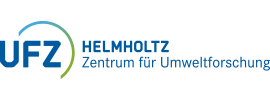Details zur Publikation |
| Kategorie | Textpublikation |
| Referenztyp | Zeitschriften |
| DOI | 10.1016/j.envpol.2017.05.017 |
| Titel (primär) | Metal toxicity affects predatory stream invertebrates less than other functional feeding groups |
| Autor | Liess, M.; Gerner, N.V.; Kefford, B.J. |
| Quelle | Environmental Pollution |
| Erscheinungsjahr | 2017 |
| Department | OEKOTOX |
| Band/Volume | 227 |
| Seite von | 505 |
| Seite bis | 512 |
| Sprache | englisch |
| Keywords | Trace metals; Biological indicator system; Field monitoring; Water quality guidelines |
| UFZ Querschnittsthemen | RU2; |
| Abstract | Ecosystem effects of heavy metals need to be identified for a retrospective risk assessment, and potential impacts need to be predicted for a prospective risk assessment. In this study, we established a strong correlation between the toxic pressure of dissolved metals and invertebrate species. We compiled available data from a wide geographical range of Australian streams that were contaminated with heavy metals [mainly copper (Cu) and zinc (Zn)] and the corresponding invertebrate communities. Heavy metal toxicity is positively related to the proportion of predators within the invertebrate community, represented by the predatorratio, with an effect threshold range of 2.6 μg/L - 26 μg/L for Cu and 62 μg/L - 617 μg/L for Zn. These effect concentrations are in the ranges of the concentrations identified in model ecosystems and other field investigations and are just above the existing guideline limits. Heavy metals also affects the taxa richness negatively. Other community measures, such as the evenness, number of EPT (Ephemeroptera, Plecoptera, and Trichoptera) taxa, SPEcies At Risk (SPEAR)pesticides or SPEARsalinity were relatively poorly correlated with heavy metal toxicity in the streams. Therefore, we suggest applying the predatorratio within the community as a starting point for an indicator of the dissolved metal toxicity, the SPEARmetals. |
| dauerhafte UFZ-Verlinkung | https://www.ufz.de/index.php?en=20939&ufzPublicationIdentifier=18784 |
| Liess, M., Gerner, N.V., Kefford, B.J. (2017): Metal toxicity affects predatory stream invertebrates less than other functional feeding groups Environ. Pollut. 227 , 505 - 512 10.1016/j.envpol.2017.05.017 |
|
